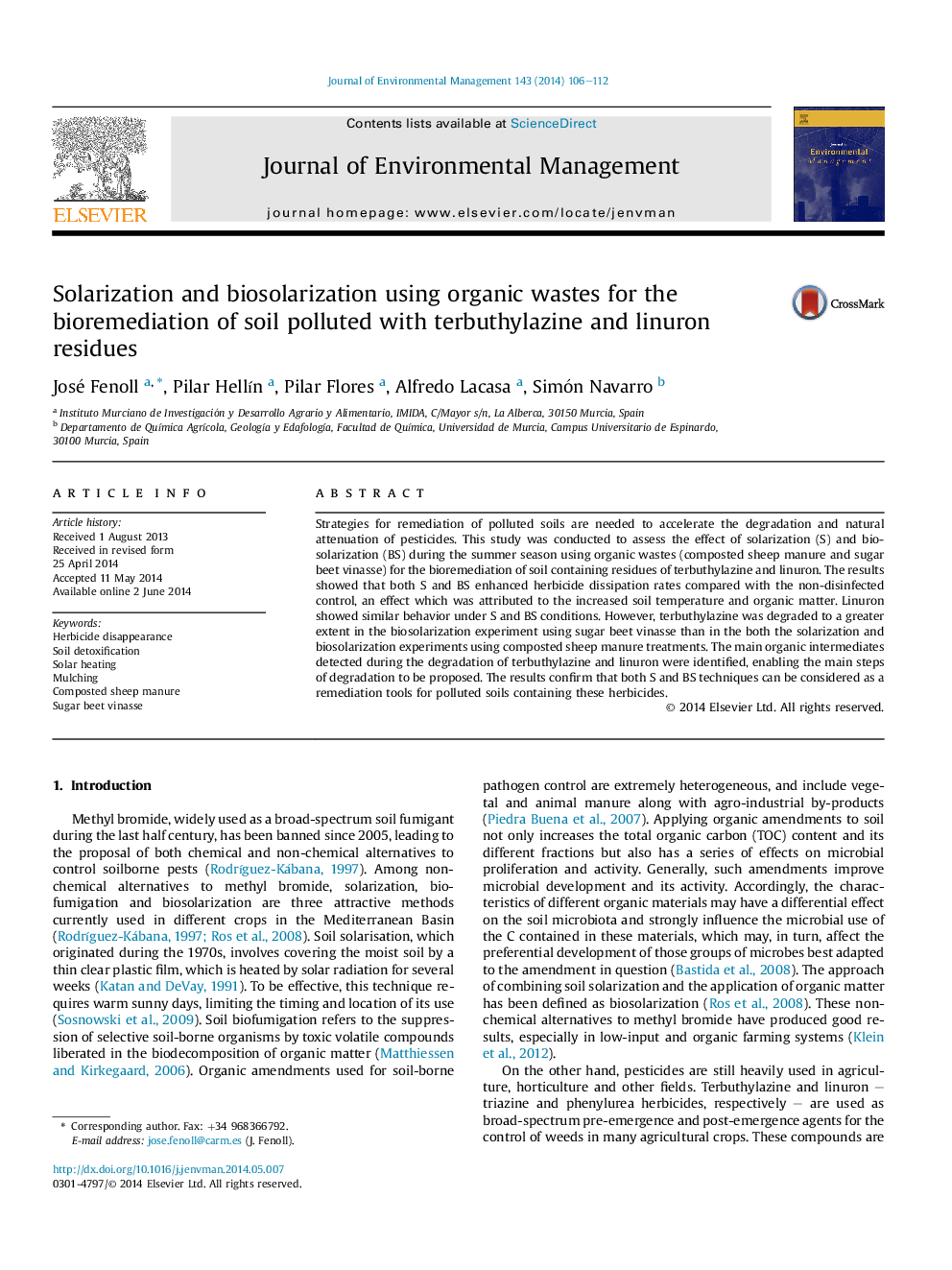| Article ID | Journal | Published Year | Pages | File Type |
|---|---|---|---|---|
| 1055759 | Journal of Environmental Management | 2014 | 7 Pages |
•Removal of herbicides by soil solarisation (S) and biosolarization (BS) was studied.•Linuron showed similar behavior under S and BS conditions.•S and BS enhanced degradation rates in comparison with the non-disinfected control.•Terbuthylazine showed higher dissipation rates with BS using sugar beet vinasse.•Derivatives of terbuthylazine and linuron were detected.
Strategies for remediation of polluted soils are needed to accelerate the degradation and natural attenuation of pesticides. This study was conducted to assess the effect of solarization (S) and biosolarization (BS) during the summer season using organic wastes (composted sheep manure and sugar beet vinasse) for the bioremediation of soil containing residues of terbuthylazine and linuron. The results showed that both S and BS enhanced herbicide dissipation rates compared with the non-disinfected control, an effect which was attributed to the increased soil temperature and organic matter. Linuron showed similar behavior under S and BS conditions. However, terbuthylazine was degraded to a greater extent in the biosolarization experiment using sugar beet vinasse than in the both the solarization and biosolarization experiments using composted sheep manure treatments. The main organic intermediates detected during the degradation of terbuthylazine and linuron were identified, enabling the main steps of degradation to be proposed. The results confirm that both S and BS techniques can be considered as a remediation tools for polluted soils containing these herbicides.
Graphical abstractFigure optionsDownload full-size imageDownload as PowerPoint slide
